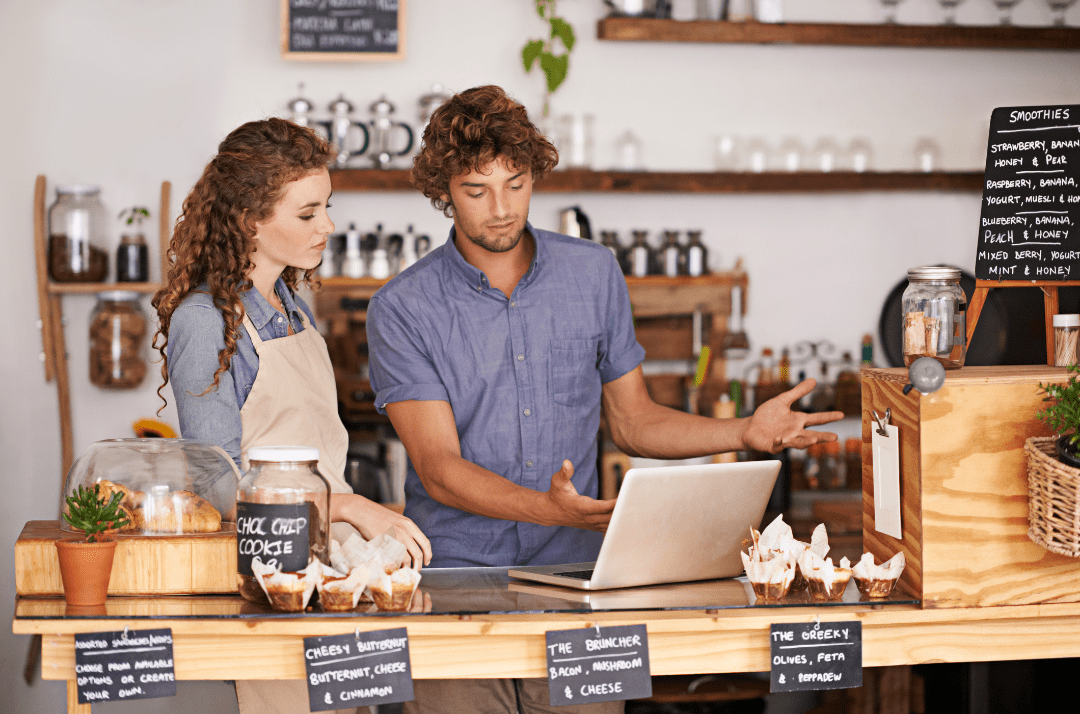Technology and the internet are making waves in how the commercial market works, and new ways of earning income have emerged, such as live shopping events and E-commerce. Making money becomes about creativity, connection, and engagement.
The best way to imagine this new landscape is to think of a live-streamed or broadcasted event through the internet where the audience and potential buyers are not just spectators but also participants and even stars.
If you are looking to venture into this new environment, this article is for you. After all, we will explore how this online marketplace has flourished and guide you in gaining success in this new landscape by giving you 7 of the best practices for using API and Live Shopping Events to drive sales. For others who have started their live streaming ventures, this article will guide you on boosting your businesses and transforming your live streams into a captivating shopping experience.

7 Best Live Shopping APIs Practice for sales Growth
Engage With Your Audience
Like regular live streaming, live shopping events grant sellers the ability to connect and interact with their audience in real-time. Most E-commerce businesses need help to do this, which is why live shopping events have gained major success.
To use this feature and gain its greatest benefit, here are several ways to do so.
First, with live shopping events, users and sellers have access to live chats and live comments. So, sellers must integrate these comments as conversations by acknowledging and responding to these comments by using name and follow-up questions; you could also ask for their opinions.
Second, very much like how conversations work, keep it flowing by engaging more with your live audience. Keep these conversations varied. If the live chat is becoming slow or waning, ask another question or move the conversation along.
API Integration for Seamless Transactions
API integration is like the sidekick of seamless and safe transactions in live shopping events; it crafts a fabric of improved user satisfaction. To picture this, imagine an on-air broadcast that enables viewers to easily click and buy displayed products simply because of smoothly deployed APIs.
This is not only a matter of convenience; this is the magic stick behind impulse purchases, transforming shopping voyages into frictionless dance. Consider APIs as the leader of a dance, coordinating payments and improving conversion rates. Not only is technology active, but it’s the act of refining to make sure that each click feels like a natural step, transforming an in-person event into a captivating shopping journey.
Interactive Chatbot Assistance
It is relatable that sellers cannot effectively communicate or engage customers at all times; after all, sellers are humans and sometimes may need rest. At the same time, the amount of audience interaction may overwhelm the seller, and he is unable to address specific problems, queries, and issues.
Despite all of that, engaging the customer is still possible through the use of interactive chatbot assistance. With these API-driven chatbots, sellers can automate their responses and address less concerning questions and concerns from the customer. With this real-time interaction, the audience may become potential buyers. After all, a quick response fosters a positive environment, which may further drive confidence and sales of your brand/product.
Post-Event Analytics and Insights
A significant practice being done by both online and traditional businesses, analysis of data and information is vital in gaining insights into a seller’s customer base and creating strategies to drive sales.
APIs play a crucial function in collecting submit-occasion analytics, providing valuable insights into patron behavior and choices. Analyzing these statistics allows organizations to refine their techniques, optimize future occasions, and constantly enhance the live buying revel.
After a stay-shopping event, APIs analyze viewer engagement, popular merchandise, and conversion charges. This record informs the commercial enterprise about purchaser preferences, letting them tailor future activities for elevated relevance and effectiveness.
Offer Incentives, Discounts, and Exclusive Deals
By far one of the most traditional methods, things like incentives, discounts, and exclusive deals are the universal languages that both sellers and consumers have spoken.
This is more relevant in live shopping events as limited-time discounts or additional benefits promote a sense of urgency and sensation that aids in encouraging consumers to buy your products. This practice will also lead to higher website traffic to a seller’s online shopping site.
At the same time, sellers can deepen their connection with their audience by creating promotions specifically for certain clients and consumers, which shows that they understand their customers’ needs and preferences.
Leverage Social Media
With social media becoming a major entity on the internet, its impact on the E-commerce market is undeniable. With social media, businesses have access and reach to a huge and diverse number of potential customers. After all, 80% of customers have started using social media platforms to communicate with businesses; hence, we can convert this channel into a money-making device for bringing people to your site.
There are many ways to exploit this to gain the greatest benefit. First, during live shopping events, sharing your social media links and other websites is highly recommended to promote your brand and your product.
Second, eye-catching content such as catchy videos, graphics, and captions pertaining to your business is also an effective strategy as it may lead to more traffic to your online shop.
Lastly, with a large amount of your audience on social media, it is critical to interact and engage with them on social media. This can be done by replying to the comments, messages, and mentions, which is an active engagement. Use social media customer support tools such as live chat, messaging applications, or a chatbot. With well-established relationships and personalized engagements, you can gain dedicated followers as well as your potential consumers.
Use an Effective Platform
One of the most basic practices is to choose the correct platform with the right features and services. A major example of such a platform is Mylivecart, a live-streaming solution that transforms your online company into a fascinating virtual theatre for customers all over the world. Mylivecart becomes a groundbreaking contribution by combining old-school e-commerce and advanced live-streaming technologies, resulting in an engaging purchasing experience for consumers.
The simplest way to grasp Mylivecart is to imagine two or three minutes in which you may go live and build an immersive virtual environment for selling things and establishing genuine relationships with your visitors. A tool is more than just Mylivecart; it connects your business and consumers, fostering genuine connections that result in unexpected sales increases.
Mylivecart Pricing and Features
The pricing plans of Mylivecart are flexible and adaptable, catering to the needs of diverse businesses. All pricing plans are devised to improve the live shopping experience for different levels of event hosting and audience engagement.
- Basic Plan ($49/month)
-
-
- 30 Event Hours: Ideal for start-ups launching new collections with live-stream sessions that are gripping.
- 1 Host, 200 Attendees: Intimate interaction with a small crowd, leading to active involvement at the moment.
- 7-Day Analytics: Get valuable insights for a week, optimizing approaches based on recent achievements.
- 2 Social Channels: Share live events via two channels to maximize coverage.
- App Integrations: Seamless integration with Shopify, WordPress, and preview support for Magento, Salesforce, and Odoo.
-
- Growth Plan ($179/month)
-
- 50 Event Hours: Ideal for growing enterprises conducting regular live events featuring product launches.
- 2 Hosts, 500 Attendees: Double hosting capacity for a larger audience and enhanced interactivity.
- 30-Day Analytics: Extended analytics access for a month, providing a deeper understanding of trends.
- 5 Social Channels: Expand social reach by broadcasting across five platforms.
- App Integrations: Same robust integrations as the Basic Plan.
- Expansion Plan ($299/month)
-
- 100 Event Hours: Tailored for established brands hosting extensive live interactions.
- 4 Hosts, 1000 Attendees: Increased hosting capability for dynamic and engaging live events.
- 60 Days Analytics: Two months of analytics retention for strategic planning and performance evaluation.
- All Social Channels: Maximize visibility by streaming across all available social media channels.
- App Integrations: Complete integration solutions with the most popular e-commerce platforms.
- Enterprise Plan (Customized)
-
- Tailored solutions that provide a range of integrations for a seamless live shopping experience.
- All Social Channels: Broadcast outreach to several social media networks.
- App Integrations: Full range of integrations to automate live shopping events.
Conclusion
With technology and the internet expanding the trading landscape, online business and selling have become more relevant, with live shopping emerging as a major player in said market. As such, we have explored several key practices to gain success by Harnessing APIs in Live Shopping Events.
From this exploration, we have discussed several strategies. First, the engagement of the audience is vital as it creates a sense of community and connectivity. To do so, act as if you are having a conversation with your audience. You could also offer them incentives and benefits to make your interaction more catchy and engaging. If this cannot be done at all times, it is highly suggested to use a chatbot or share your social media to keep the line of communication.
Second, the use and integration of an effective live streaming API platform is a must; after all, the use of API grants the seller access to several benefits, namely tailor-made features and post-event analytics, as well as grants consumers a simple shopping experience.
Overall, the future is one where live shopping events are not just transactions but immersive experiences, transcending screens into realms of connection. The stage is set for brands to become storytellers and consumers, the eager audience.



